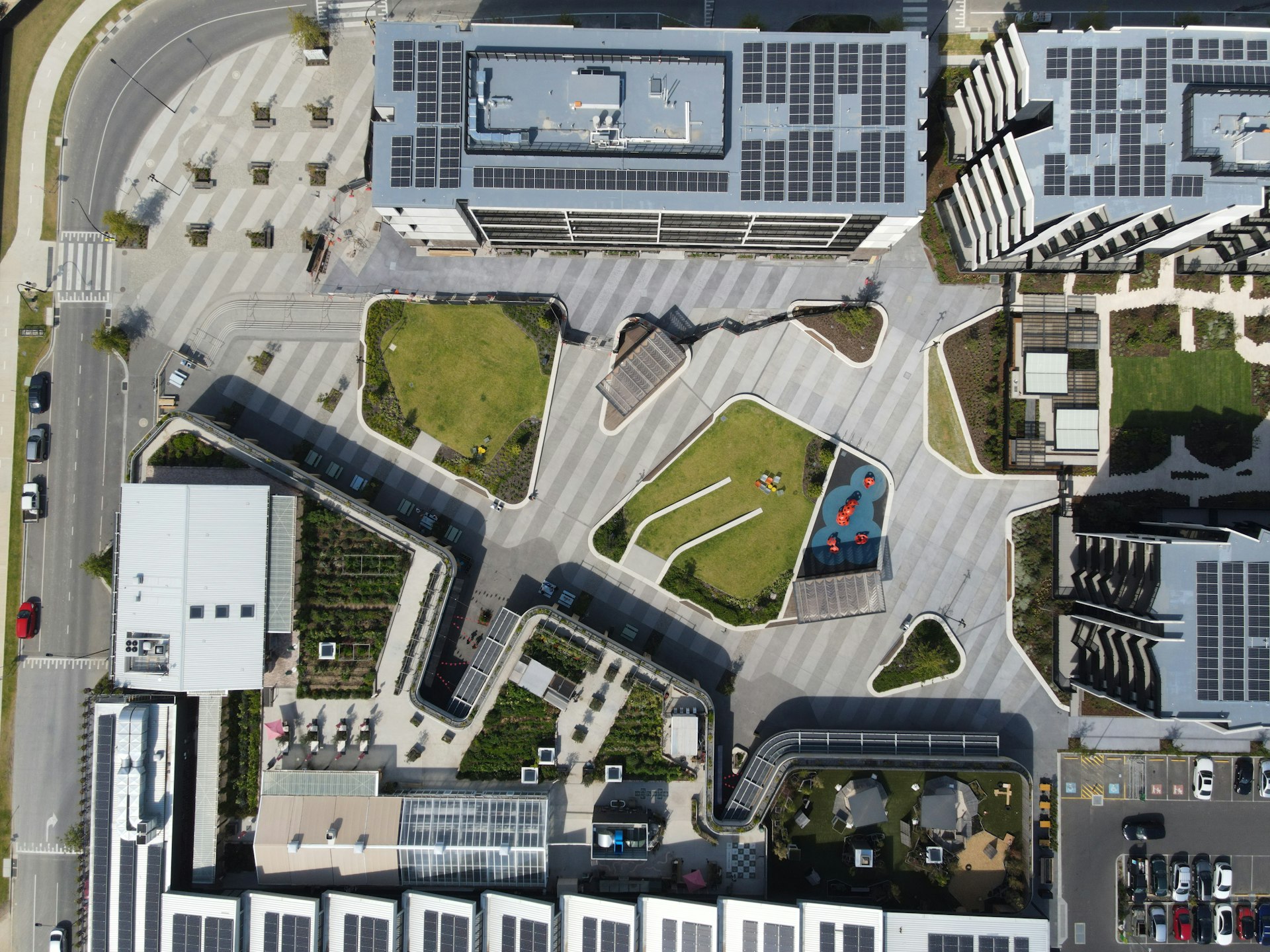When architects and engineers commission 3D laser scanning or drone surveys, they expect millimeter-level accuracy for their projects. Yet many discover too late that their "high-precision" data contains systematic errors that compromise entire design processes, leading to costly rework and project delays.
The culprit? Missing or inadequate control surveys.
At Spatial Reality Solutions (SRS), we're often called in after these projects fail to redo the work properly or establish control on sites where the spatial data has become an unusable mess. Understanding why control surveys are essential can save your next building project from becoming an expensive lesson in false economy.
What Are Control Surveys?
Control surveys establish the precise spatial framework that allows all measurement data to be referenced to real-world coordinates with known accuracy. Think of control points as a building's foundation: invisible once construction begins, but absolutely critical to structural  integrity.
integrity.
The process involves establishing precisely positioned points using Global Navigation Satellite Systems (GNSS), robotic total stations, and digital levels. These control points serve as the spatial reference framework for all subsequent data collection, whether from laser scanners, drones, photogrammetry, or traditional surveying methods.
In construction projects, accuracy isn't just about measurement; it's about trust. When mechanical engineers design HVAC systems based on as-built data or architects plan renovations around existing structural elements, they're trusting that the spatial information is correct. Without proper control surveys, that trust is misplaced.
The Real Cost of Cutting Corners
Consider a heritage building renovation where initial scanning was performed without
establishing proper control. The service provider claimed their laser scanner was accurate to ±2mm, marketing this as "survey-grade precision."xx
Six months into design development, the architectural team discovered that structural elements were systematically displaced by 15cm from their assumed positions. The entire MEP design required revision, custom-fabricated components had to be scrapped, and the project faced a three-month delay.
The initial "savings" from skipping control surveys? Approximately $8,000. The ultimate cost of the errors? Over $400,000 in rework, delays, and materials.
Industry Myths That Cost Money
"Our Drone Lidar Doesn't Need Ground Control"
Even sophisticated unmanned aerial systems require ground control for absolute accuracy. ASPRS standards explicitly require independent check points for accuracy validation, something impossible without ground-based control surveys.
"Scanner Specifications Guarantee Project Accuracy"
A scanner rated at ±2mm accuracy can easily produce data with errors exceeding 50mm when systematic influences aren't controlled. Temperature variations, atmospheric refraction, and registration errors all compound without proper control frameworks.
"Control Surveys Are Optional Add-Ons"
Control surveys aren't extras; they're the foundation that makes precision measurement services possible. Firms treating them as optional are selling measurement services without quality assurance.
The SRS Professional Advantage
As ASPRS Certified Mapping Scientists operating under Association of Professional Engineers and Geoscientists of Saskatchewan (APEGS) licensing, our team understands the critical  relationship between control surveys and data quality. This certification and professional engineering oversight ensures adherence to accuracy standards that many service providers lack.
relationship between control surveys and data quality. This certification and professional engineering oversight ensures adherence to accuracy standards that many service providers lack.
At SRS, control surveys are the first step in every precision measurement project. Site reconnaissance identifies optimal control point locations, network design ensures redundancy, precision measurement uses calibrated professional-grade instruments, and statistical analysis validates network quality before data collection begins.
Real-World Project Benefits
Design Confidence: Knowing existing conditions data is spatially accurate enables architects to integrate new elements with precise existing geometry and satisfy requirements for accurate building documentation.
Engineering Reliability: Mechanical, electrical, and plumbing systems can be designed with confidence. Structural analysis is based on accurate geometric data, and clash detection identifies conflicts digitally rather than during expensive construction phases.
Risk Mitigation: Proper control surveys reduce uncertainty that leads to change orders and delays, protect budgets by avoiding costly rework from inaccurate spatial data, and build stakeholder confidence through reliable data.
Recognizing Quality vs Corner-Cutting
Quality providers reference ASPRS standards and explain their network design process. They provide independent check point procedures and statistical analysis demonstrating achieved accuracy. Professional licensing and ASPRS certification indicate expertise in accuracy standards.
Red flags include providers claiming control & check points isn't necessary, services unable to explain accuracy validation procedures, quotes that seem too good to be true, and firms without professional engineers or certified mapping scientists with relevant backgrounds to the proposed services on staff.
The Investment That Pays
Professional control surveys require financial investment upfront but guarantee accuracy meeting professional standards, provide data usable for entire project lifecycles, and reduce risk of costly errors. Corner-cutting alternatives offer apparent savings of a few thousand dollars but come with unknown accuracy, high risk of expensive rework, and potential professional liability issues.
meeting professional standards, provide data usable for entire project lifecycles, and reduce risk of costly errors. Corner-cutting alternatives offer apparent savings of a few thousand dollars but come with unknown accuracy, high risk of expensive rework, and potential professional liability issues.
Established control networks serve future building modifications, consistent coordinate systems enable historical comparisons, and accurate documentation enhances your firm's reputation while reducing professional liability exposure.
Conclusion
The principle guiding SRS applies perfectly to control surveys: "The bitterness of poor quality remains long after the sweetness of low price is forgotten." Short-term savings from cutting corners pale compared to long-term costs of systematic errors, rework, and damaged professional relationships.
Every project deserves confidence that spatial data is accurate, reliable, and professionally validated. Control surveys provide that confidence by establishing the invisible foundation that makes precision measurement possible.
When evaluating service providers, remember that the cheapest option rarely delivers the best value. Partner with professionals who understand that control surveys aren't optional add-ons but the cornerstone of accurate, reliable building documentation.
At SRS, we create spatial foundations you can build on with confidence.
